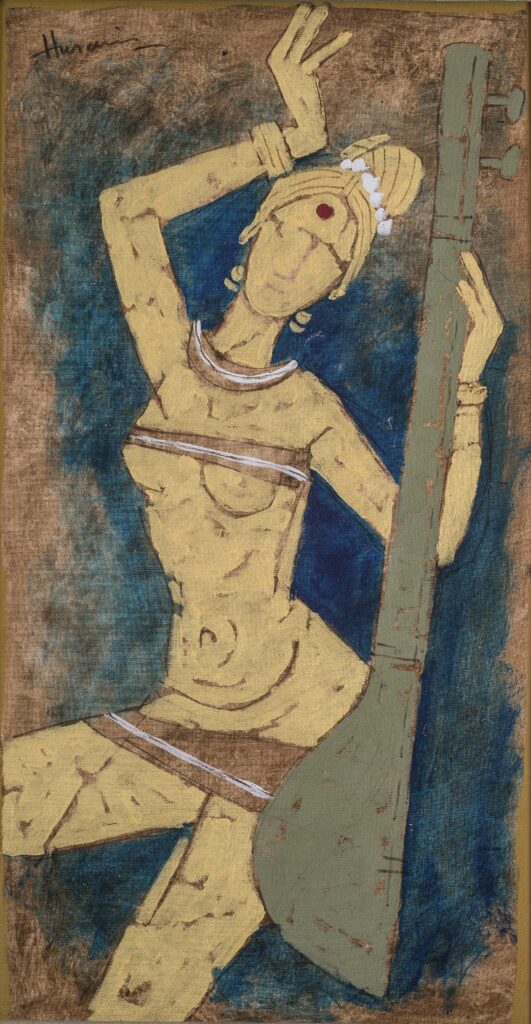Establishing his practice along with the Partition in the 1950s, M.F. Husain participated and played a big part in the creation of the modern Indian pictorial tradition. “For Husain, modern Indian pictorial language needed to be recognizable to the people on the street and in the village. After the Partition, a modern India needs an artist for its people. For Husain, as shared Indian identity and humanity was the entrance to creating a universal pictorial language that Indians could understand and use.[…]”(Thaara Shankar, M.F. Husain’s Modern India, Bowdoin Journal of Art, John Hopkins University, 2018, p. 12)
As the country was struggling to regain identity post-independence, there was a great desire to document and promote the nation’s rich and varied heritage of art. Believing that modern Indian picture has a firm place within India’s long history, Husain plied various sources and presented a range of images depicting the nation; from dancers, sculptures, to images of the great epics – subjects that Husain considered readily available and deemed representative of the Indian culture and heritage.
Imbibing the creative interaction between different art forms, Husain initiated his series on musicians in 1959, a theme that he revisited throughout the following decades. He adopted traditional postures from sculptures to convey a sense of movement in his figures and depicted traditional instruments to express a sense of music and dance on his canvases.
In the current lot featuring the junction between artistic interpretation and content, Husain used his own pictorial language by straying from any defined qualities and adapting symbols as visual stimuli. The featureless face of the woman is adorned with ‘kumkuma’ and jewelry while the veena seen here is typical of Husain’s iconography, and a recurring motif in his paintings of musicians. The blue outlining the figure in contrast to the otherwise earthy swatch of ochre and brown creates a sense of depth and movement in the composition. Husain stretched icons and played with the blurriness by employing a simplified composition in an undefined setting and focusing on the representational more than individualizing details.
Auction Catalogue – South Asian Art – ‘Modern and Contemporary – 13-17 June 2019
